Osedax mucofloris (bone-eating snot-flower worm)
Watch video footage of the intriguingly named bone-eating snot-flower worm, Osedax mucofloris, as its interesting features are discussed by Adrian Glover, one of the scientists who discovered the annelid worm living on whale remains.
Osedax mucofloris is also known as the bone-eating snot-flower worm. This bizarre animal was discovered and described in 2005, by Museum scientists working together with marine biologists in Sweden.
O. mucofloris is a type of annelid worm, related to more familiar animals such as ragworms (polychaetes), earthworms and leeches, although it looks very different.
The animal lives on whale bones on the sea floor and it is thought that this species, and others closely related to it, have evolved unique adaptations to this unusual habitat.
A surprising discovery
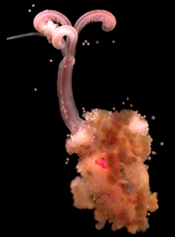
Entire Osedax mucofloris animal, dissected out from a whale bone
Osedax mucofloris was first found on the remains of a dead whale in a fjord on the Swedish North Sea coast. The whale had been on the sea floor for several months and had already been stripped of flesh by scavenging organisms. The worm appeared as a pink, flower-like plume growing straight out of the side of the bones.
By dissecting these plumes out of the bones, the scientists discovered that the other half of the animal (the ‘root’) was buried inside the bone, presumably extracting food from it.
The discovery was a great surprise, as previously this type of worm had only been recorded from very deep water (below 2500m) in the north Pacific. In contrast, the Swedish discovery was at the relatively shallow depth of 125m.
A key question in deep sea biology is how tiny invertebrates such as O. mucofloris are able to disperse between these isolated habitats, across the vast distances of the ocean floor.
-

Taxonomy
Learn about the morphology of Osedax mucofloris and find out what DNA studies and close relatives have suggested about the species' family links and evolution.
-

Distribution, habitat and threats
Discover where Osedax mucofloris is known from and why it is proving difficult to learn more about its distribution. Find out more about its habitat and potential threats.
-

Reproduction
Males and females of this species are very different. Find out why Osedax is thought to have evolved dwarf males and why it is important to understand the reproductive processes used by this marine worm.
Images
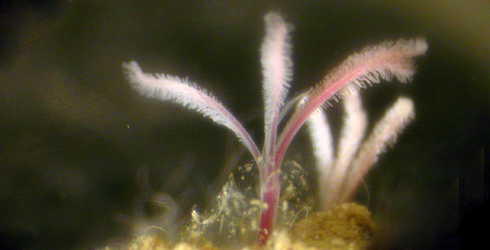
Osedax mucofloris, seen alive, growing on the surface of a whale bone

Entire Osedax mucofloris animal, dissected out from a whale bone
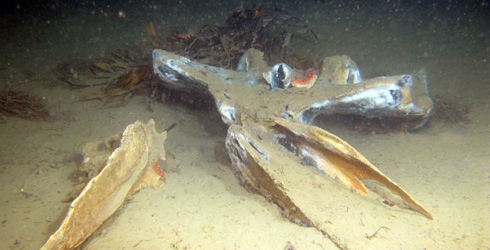
The whale remains where Osedax mucofloris was first found, at a depth of 125m.
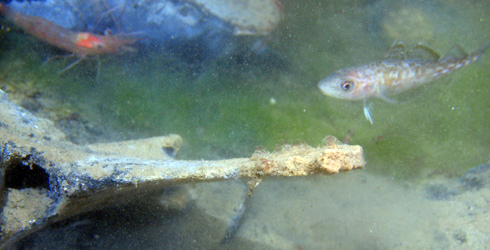
Image taken by remotely operated vehicle, showing Osedax mucofloris on a whale bone.
© Thomas Lundalv
Fertilised eggs of Osedax mucofloris being released into the water column
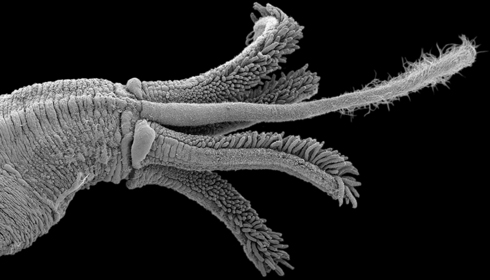
This scanning electron microscope image reveals the major features of the part of Osedax mucofloris which extends out of the whale bone into the seawater.
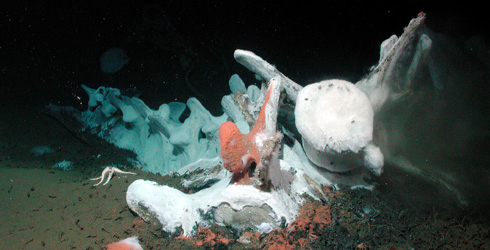
A deep sea whale-fall in the North Pacific, depth 1600m.
© Craig R SmithAbout the author

Dr Adrian Glover
Marine biologist focussing on deep-sea biodiversity, systematics, evolution and ecology of polychaetes.